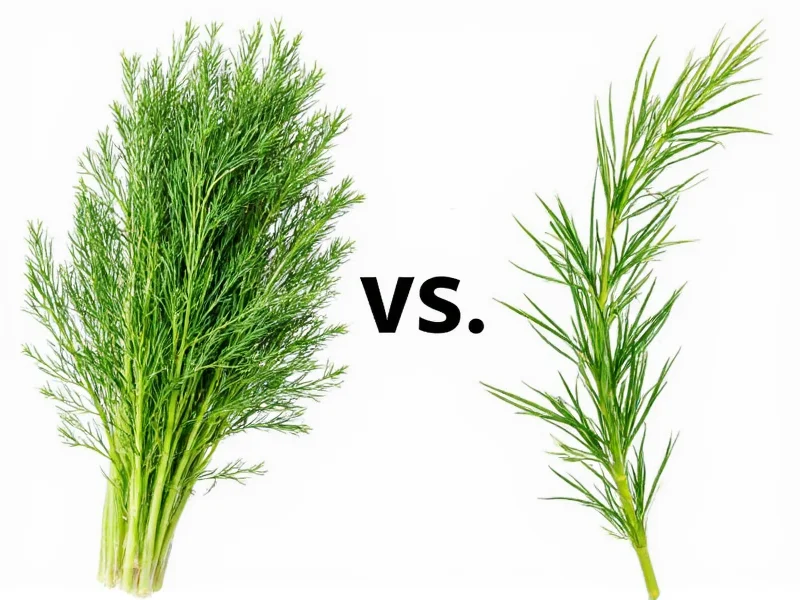When navigating recipe instructions, the terms "head of dill" and "sprig of dill" often cause confusion for home cooks. These aren't interchangeable measurements—they represent fundamentally different parts of the dill plant with distinct culinary applications. Getting this wrong can dramatically alter your dish's flavor profile, especially in sensitive preparations like pickling or delicate sauces.
Understanding Dill Terminology in Cooking
Dill (Anethum graveolens) appears in two primary forms in recipes, each serving specific purposes. The confusion stems from inconsistent terminology across cookbooks and regional variations in culinary language. Professional chefs and experienced home cooks recognize these differences immediately, but beginners often struggle with proper substitution and measurement.
What Exactly Is a Sprig of Dill?
A sprig of dill represents the smallest usable culinary unit—a single slender stem with attached feathery fronds. Typically measuring 2-4 inches in length, this delicate portion contains the most concentrated essential oils and offers the freshest, most vibrant dill flavor. Recipes specify sprigs when they require:
- Subtle flavor infusion without overwhelming other ingredients
- Garnishing finished dishes for visual appeal
- Adding to cocktails or infused vinegars
- Placing inside fish cavities during roasting
When a recipe calls for "a sprig of dill," it generally means one individual stem that can be easily pinched between your fingers. This measurement provides approximately 1-2 teaspoons of loosely packed dill fronds.
What Constitutes a Head of Dill?
A head of dill—sometimes called a bouquet or cluster—refers to the mature flowering portion at the top of the dill plant. This substantial unit features multiple branching stems radiating from a central point, often including developing seed heads. Measuring 4-6 inches across, a head contains significantly more plant material than a single sprig.
Chefs and pickle makers prefer heads of dill for applications requiring:
- Pickling cucumbers or other vegetables
- Brining solutions for meats
- Creating dill weed for preservation
- Recipes specifically designed for substantial dill presence
The head delivers more complex flavor notes due to the combination of mature leaves and developing seeds, making it ideal for preservation techniques where flavor penetration matters.
Visual Identification Guide
Understanding the physical differences prevents grocery store confusion:
- Sprig of dill: Thin, flexible single stem with fine, lacy green foliage. Often sold in small bunches where individual sprigs can be easily separated.
- Head of dill: Broader, more substantial cluster with multiple stems emerging from a central point. May show tiny yellow flowers or developing seed pods in mature specimens.
When shopping, look for vibrant green color without yellowing or wilting. The head should feel slightly substantial in your hand, while individual sprigs should appear delicate but crisp.
| Measurement | Sprig of Dill | Head of Dill |
|---|---|---|
| Physical Description | Single slender stem (2-4" long) with fine fronds | Flowering cluster (4-6" diameter) with multiple stems |
| Volume Equivalent | 1-2 tsp loosely packed fronds | ¼-½ cup loosely packed fronds |
| Typical Culinary Use | Garnish, subtle flavoring, infusion | Pickling, brining, substantial flavoring |
| Substitution Ratio | 1 sprig = 1/8 head | 1 head = 8 sprigs |
Measurement and Substitution Guidelines
Accurate conversion between these forms prevents flavor imbalances. When substituting:
- One standard head of dill equals approximately 8 individual sprigs
- One sprig provides about 1-2 teaspoons of usable dill fronds
- A typical grocery store bunch (4-6 oz) contains 1 head or 6-10 individual sprigs
For precise measurement in critical applications like pickling, weigh your dill. One head typically weighs 1-1.5 ounces (28-42g), while a single sprig weighs 0.2-0.3 ounces (5-8g). This weight-based approach ensures consistent results, especially important for food preservation where flavor balance affects safety.
Culinary Applications and Best Practices
Understanding when to use each form elevates your cooking:
When to Use Sprigs of Dill
Choose individual sprigs for applications requiring delicate flavor notes:
- Finishing touch on soups, dips, or seafood dishes
- Infusing subtle flavor into vinegars or oils (remove after 24-48 hours)
- Placing inside poultry or fish before roasting
- Garnishing finished plates for visual appeal
Sprigs work best when you want dill flavor without visible leaf fragments in the final dish. Their smaller size allows for easy removal after infusion.
When to Use Heads of Dill
Opt for whole heads when substantial dill presence matters:
- Pickling cucumbers, beets, or other vegetables
- Creating traditional dill pickles (the head's seed pods add authentic flavor)
- Brining solutions for salmon gravlax
- Recipes specifically calling for "a head" or "bouquet" of dill
The head's complex structure allows for gradual flavor release during extended cooking or preservation processes. The developing seeds in mature heads contribute additional flavor dimensions that single sprigs cannot replicate.
Practical Tips for Home Cooks
Maximize your dill usage with these professional techniques:
- Storage: Keep sprigs upright in a glass with an inch of water (like flowers), covered loosely with a plastic bag in the refrigerator. Heads last longer when wrapped in slightly damp paper towels inside a perforated plastic bag.
- Preparation: For sprigs, simply rinse and pat dry. For heads, gently separate stems only if your recipe requires it—intact heads work better for pickling jars.
- Substitution: When substituting dried dill for fresh, use one teaspoon dried for every tablespoon of fresh sprigs, or one tablespoon dried for a whole head.
- Harvesting: If growing your own, cut sprigs in morning when essential oils are most concentrated. Harvest heads just as flowers begin to form for optimal flavor.
Troubleshooting Common Dill Mistakes
Avoid these frequent errors that compromise dish quality:
- Over-substituting: Using a whole head when a recipe calls for a sprig creates overpowering dill flavor that dominates other ingredients.
- Under-substituting: Using just one sprig in pickling recipes results in insufficient dill flavor penetration.
- Improper storage: Storing dill like hardy herbs (in sealed containers without moisture) causes rapid wilting.
- Using mature seed heads: Fully developed seed heads have different flavor profiles than leafy portions—don't substitute interchangeably.











 浙公网安备
33010002000092号
浙公网安备
33010002000092号 浙B2-20120091-4
浙B2-20120091-4